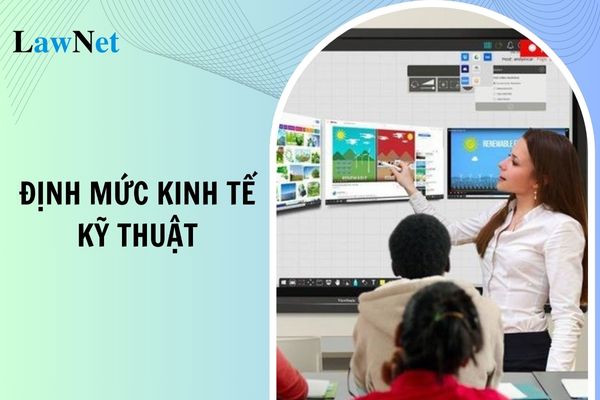What is the basis for developing economic and technical norms in the education sector in Vietnam?
What is the basis for developing economic and technical norms in the education sector in Vietnam?
Under Article 5 of Circular 14/2024/TT-BGDDT, the basis for developing economic and technical norms in the education sector in Vietnam is as follows:
- Regulations on education programs, training programs, the standard of knowledge volume, and learner's output competency standards corresponding to each educational level and training degree for formal education and other education programs for lifelong education.
- The contents stipulated in the Charter of Preschools; lower secondary school, upper secondary school, and multi-level school charter; Charter of Pedagogical Colleges; Operational Regulations for Lifelong Education Institutions, Higher Education Institutions; job positions, structure of public employees according to professional titles, and norms for the number of staff, working policies of teachers, administrative staff, and service staff of educational institutions.
- Actual operating conditions of educational institutions concerning physical infrastructure, including construction works, workshops, machinery, teaching, and learning equipment.
- Regulations on standards and norms for working equipment and means for teachers, lecturers, and workers in public service providers.
- Regulations on standards, norms for using areas of service buildings, and the standards and norms for using specialized machinery and equipment in the field of education and training.
- Annual statistics or data within reporting periods and related documents.

What is the basis for developing economic and technical norms in the education sector in Vietnam? (Image from the Internet)
What are the objectives and principles for developing and issuing economic and technical norms in the education sector in Vietnam?
Under Article 3 of Circular 14/2024/TT-BGDDT, the objectives and principles for developing and issuing economic and technical norms in the education sector in Vietnam are:
- To enable competent authorities to construct, appraise, and approve unit prices, prices of educational and training services, budgetary estimates for providing educational and training services using state budgets, and economic management in educational and training activities according to legal regulations to enhance effectiveness, efficiency, and savings.
- To promote private investment in the field of education and training, creating an equitable operational environment among educational institutions within the national education system.
- To ensure the principles of accurate and complete calculation to accomplish education and training for learners in achieving the criteria, standards, and quality as per current regulations.
How many methods are there for developing economic and technical norms in the education sector in Vietnam?
Under Article 6 of Circular 14/2024/TT-BGDDT, the methods for developing economic and technical norms are as follows:
Methods for Developing Economic and Technical Norms
1. Standard method: based on the standards and legal regulations on working time, rest policies, consumption rate of machinery and equipment to construct labor norms, equipment, materials, and physical foundation for each task, serving as a foundation for calculating the economic and technical norms.
2. Comprehensive statistical method: based on annual statistical data or data within reporting periods over 3 consecutive years before the time of constructing the economic and technical norms and the actual education and training situation at educational institutions to construct economic and technical norms.
3. Experiential analysis method: conducting surveys, experiments according to each procedure and work content; based on survey results, experiments to analyze and calculate each constituent element of the norm.
4. Comparative method: based on the norms of equivalent tasks and products already practiced in reality to construct economic and technical norms.
Thus, there are 04 methods for developing economic and technical norms in the education sector in Vietnam as follows:
- Standard method: based on the standards and legal regulations on working time, rest policies, consumption rate of machinery and equipment to construct labor norms, equipment, materials, and physical foundation for each task, serving as a foundation for calculating the economic and technical norms.
- Comprehensive statistical method: based on annual statistical data or data within reporting periods over 3 consecutive years before the time of constructing the economic and technical norms and the actual education and training situation at educational institutions to construct economic and technical norms.
- Experiential analysis method: conducting surveys, experiments according to each procedure and work content; based on survey results, experiments to analyze and calculate each constituent element of the norm.
- Comparative method: based on the norms of equivalent tasks and products already practiced in reality to construct economic and technical norms.

